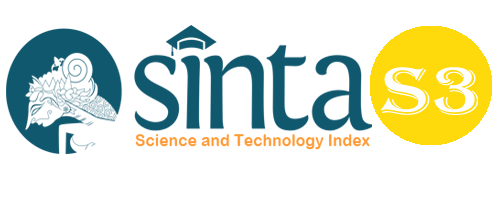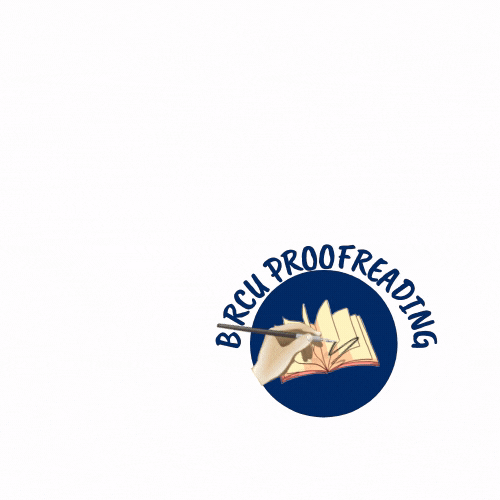The Effect of Self-Service Technology on Customers’ Trust and Loyalty (Case Study at Terminal 3 Self-Service Technology Soekarno-Hatta International Airport)
Abstract
This study aims to analyze the effect of self-service technology (SST) on customer’s trust and loyalty at PT. Angkasa Pura II (Persero) by taking the object of study at Terminal 3 of Soekarno-Hatta International Airport. This study uses service performance report data and self-service complaint reports for the period 2019 and 2020 to February 2020. The research method in this study is a quantitative method with SEM analysis tools - Partial Least Square (PLS). The results show that self-service technology (SST) has a significant effect on customer’s trust. Self-service technology (SST) does not necessarily have a direct and significant effect on customer’s loyalty, but through new customer’s trust, it is able to increase customer’s loyalty. The results show that customer’s trust has a significant effect on customer’s loyalty. The increase in customer’s loyalty is occurred in line with the increasing trust of PT. Angkasa Pura II (Persero) customers in the quality of the performance of self-service operating services at the airport.
Keywords
Full Text:
PDFReferences
Abdillah, Willy, and Hartono, Jogiyanto. (2015). Partial Least Square (PLS) Alternatif Structural Equation Modelling (SEM) dalam Penelitian Bisnis. Yogyakarta: Penerbit ANDI.
Agustiono, B. and Sumarno. (2006). Majalah Ilmiah Kopertis, 1(1): h; 1-18.
Bogicevic, V., Wang, W., Cobanoglu, C., Bilgihan, A., & Bujisic, M. (2016). Travel Anxiety and Enjoyment: The effect of Airport Environment on Traveler's Emotions. Journal of Air Transport Management, 122-129.
Bollen, K. A. (1989). Structural Equations with Latent Variables. John Wiley & Sons, Inc., Amerika.
Briggs, S., Sutherland, J., & Drummond, S. (2007). Are hotel serving quality? An exploratory of service quality in the Scottish hotel sector. Tourism Management, 28(4), 1006-1019.
Chin, W. W. (1998). The Partial Least Squares Approach to Structural Equation Modeling. Modern Methods for Business Research, 295, 336
Cristobal, Eduard, Carlos Flavián and Miquel Guinalíu. (2007), “Perceived E-service Quality (PeSQ): Measurement Validation and Effects on Consumer Satisfaction and Web Site Loyalty,” Managing Service Quality, 17 (3), 317–340.
Ferdinand, A. (2000). Structural Equation Modeling Dalam Penelitian Manajemen: Aplikasi Model-model Rumit dalam Penelitian untuk Tesis S-2 dan Disertasi S-3. BP Universitas Diponegoro, Semarang.
Fitzsimmons, J.A. 2003. “Is self-service the future of service?”. Journal Managing Service Quality. Vol. 13 (6): 443-444.
Griffin, Jill. 2005 Customers’ Loyalty: Menumbuhkan dan Mempertahankan Kesetiaan Pelanggan. Edisi Terjemahan Indonesia. Jakarta: Penerbit Erlangga.
Hair, Jr et. al. (2010). Multivariate Data Analysis (7th ed). United States: Pearson
Hair, Jr et. al. (2014). Multivariate Data Analysis, New International Edition., New Jersey: Pearson.
Hou, Younghai. 2005. “Service quality of online apparel retailers and impact on customers’ satisfaction, customers’ trust and customers’ loyalty”. Proquest Dissertations and Theses Publishing. North California, United States.
Iqbal, Muhammad Shahid; Hassan, Masood Ul; Habibah, Ume. (2018). Impact of self-service technology (SST) service quality on customers’ loyalty and behavioral intention: The mediating role of customers’ satisfaction, Cogent Business & Management, ISSN 2331-1975, Taylor & Francis, Abingdon, Vol. 5
Jaffer, Suraya & Timbrell, Greg. (2014). Journal Digital Strategy in Airports.
Kim, D. J., Ferrin, D. L., and Rao, H. R., 2003a. Antecedents of Consumer Trust in B-to-C Electronic Commerce, Proceedings of Ninth Americas Conference on Information Systems, pp. 157-167.
Knight, D. H.M, V. Choudhury, C. Kacmar. 2002. The Impact of Initial Consumer Trust on Intentions to Transact with a Website: a Trust Building Model. Journal of Strategy Information System.
Kotler, Philip and Keller, Kevin Lane. 2012. Principles of Marketing. 14th ed. Boston: Pearson Education Limited
Kusumadewi, R. (2019). The Role of Marketing and Individual Environment Association in Elevating the Customer Value. Budapest International Research and Critics Institute-Journal (BIRCI-Journal) Vol 2 (4): 451-460.
Lewis, Robert C. and Bernard H. Booms (1983), "The Marketing Aspects of Service Quality," in Emerging Perspectives on Services Marketing, L. Berry, G. Shostack, and G. Upah, eds., Chicago: American Marketing, 99-107.
Lin, J.S.C. & Hsieh, P.L. (2011, February). Assessing the self-service technology e-counters: development and validation of SSTQUAL scale. Journal of Retailing, 87, 194-206
Lociacono, Eleanor, Richard T. Watson and Dale Goodhue (2002), “WebQualTM: A Web Site Quality Instrument,” in American Marketing Association: Winter Marketing Educators’ Conference, 432–8.
Mayer, R.C., Davis, J. H., and Schoorman, F. D., 1995. An Integrative Model of Organizational Trust, Academy of Management Review, 30 (3): 709-734.
Meuter, M.L., Ostrom, A. L., Roundtree, R. I., and Bitner, M. J. (2000, March). Self-service technologies: Understanding customers’ satisfaction with technology-based service e-counters. Journal of Marketing, 64(3), 50-64.
Moorman, C., Zaltman, G., and Deshpande, R. 1992. Relationships between providers and users of market research: The dynamics of trust within and between organizations. Journal of Marketing Research, Vol. 29 (3): 314-328.
Morgan, R. M. & Hunt, S. D. 1994. The Commitment-Trust Theory of Relationship Marketing, Journal of Marketing, Vol. 58. July. Http://sdh.ba.ttu.edu/commitment-trust-JM94.pdf. Accessed 20 June 2015. Pp. 20 – 38.
Muawanah, U. (2010). Praktik Corporate Governance dan Spiritual Islami di Perbankan Syariah: Pendekatan Mixed Method. Disertasi PDIA PPS FEUB.
Nusjirwan, Regen, R., and Nardo, R. (2020). The Role of Service Quality and Trust in Building Customer Satisfaction and Loyalty. Budapest International Research and Critics Institute-Journal (BIRCI-Journal) Vol 3 (4): 4059-4069.
Parasuraman, A., Zeithaml, V. A., and Berry, L.L. (2000, February). A multiple item scale for measuring consumer perception of service quality. Journal of the Academy of Marketing Science, 30(4), 358-371.
Parasuraman, Ananthanarayanan, Valarie A. Zeithaml and Arvind Malhotra (2005), “E-S-QUAL: A Multiple-Item Scale for Assessing Electronic Service Quality,” Journal of Service Research, 7 (3), 213–3.
Romdonny, J., and Rosmadi, M.L.N. (2019). Factors Affecting Customer Loyalty in Products. Budapest International Research and Critics Institute-Journal (BIRCI-Journal Vol 2 (1): 337-343.
Sembiring, I. J., Suharyono & Kusumawati, A. (2014, October). Pengaruh kualitas produk dan kualitas pelayanan terhadap kepuasan pelanggan dalam membentuk loyalitas pelanggan (Studi pada pelanggan McDonald’s MT. Haryono Malang). Jurnal Administrasi Bisnis (JAB), 15(1), 1-7.
Widyaningtyas, R. (2010). Faktor-faktor yang Mempengaruhi Loyalitas dan Dampaknya pada Kepercayaan Nasabah dalam Menggunakan Jasa Kereta Api HARINA (Studi Pada PT. Kereta Api Indonesia DAOP IV Semarang). Skripsi Fakultas Ekonomi Universitas Diponegoro.
Yap, Bee Wah. (2012). “Satisfaction and trust on customers’ loyalty: a PLS approach”. Journal Business and Economics-Management. Vol. 13 (4). 154-167.
Yoo, Boonghee and Naveen Donthu. (2001), “Developing a Scale to Measure the Perceived Quality of an Internet Shopping Site (SITEQUAL),” Quarterly Journal of Electronic Commerce, 2 (1), 31–46.
Zeithaml, V.A. 2000. Service Quality, Profitability, and the Economic Worth of Customers’: What we Know and What We Need to Learn. Journal of the Academy of Marketing Science. 28(1). 67-85.
Zeithaml, Valerie, Parasuraman A.A. & Leonard, Berry L., (1990). Delivering quality service: balancing customers’ perception & expectation. New York.
DOI: https://doi.org/10.33258/birci.v5i1.4380
Article Metrics
Abstract view : 143 timesPDF - 173 times
Refbacks
- There are currently no refbacks.

This work is licensed under a Creative Commons Attribution-ShareAlike 4.0 International License.

This work is licensed under a Creative Commons Attribution-ShareAlike 4.0 International License.

_.gif)

















_.gif)



